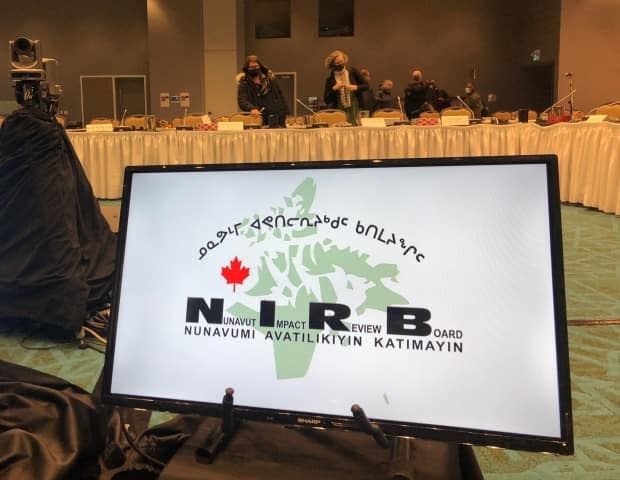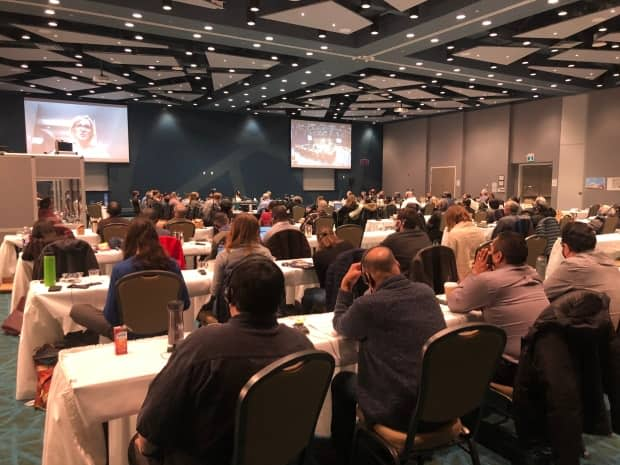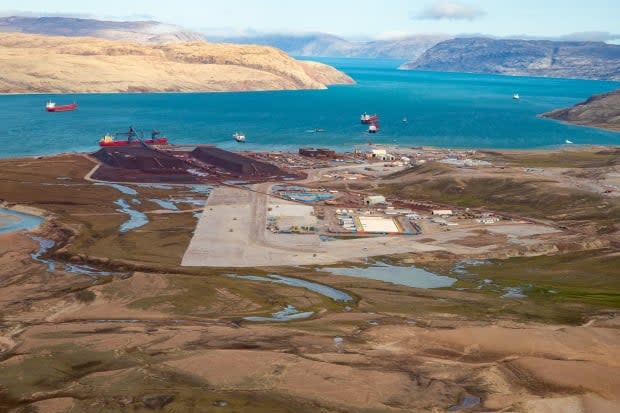Wildlife concerns still lingering as public hearings into Baffinland's expansion resume

Nunavut's Qikiqtaaluk communities are still concerned about the impact on marine wildlife if production ramps up at the Mary River Mine.
The issue was brought up Monday in Iqaluit during the first day of the final public hearings into Baffinland's Phase 2 expansion proposal.
Baffinland is requesting to double its shipping of iron ore from its Milne Inlet port to 12 million tonnes a year, which would see 176 ships sail through waters near Pond Inlet, Nunavut, a summer home to one of the world's largest narwhal populations.
Among the unresolved concerns raised Monday was how Baffinland will mitigate the impact on marine mammals with increased shipping activity.
In response, Baffinland representatives pointed to a new "adaptive management plan" which was introduced in the Mary River Inuit Certainty Agreement signed by Baffinland and the Qikiqtani Inuit Association (QIA) last June. The agreement is contingent on Phase 2 going ahead.

The plan would "monitor the impacts from the Mary River Project, identifying negative impacts, and acting to prevent any further or more serious effects," according to a QIA summary.
But on Monday, several intervenors raised concerns about whether such a plan would be effective in preventing negative impacts before they occur.
"Sometimes it may take some years before an impact is detected by monitoring and then it may take more time for mitigation to be implemented and more monitoring to be done to see if it's working," said Glen Hostetler, a representative for the Hamlet of Clyde River and the Nangmautaq Hunters and Trappers Organization.
"Is it fair to say that it's possible that due to these adaptive management timelines, the project could have some significant negative impacts on the marine environment, even with the adaptive management system in place and working well?"
Megan Lord-Hoyle, Baffinland's vice-president of sustainable development, agreed that once a potential impact is identified, it may take several seasons "to investigate and understand the changes that are occurring."
However, Baffinland's representatives also emphasized their draft plans for a tiered system of early warning indicators and thresholds, with accompanying responses.
For example, when it comes to monitoring for the impacts of shipping on narwhal, a 10 per cent decrease in calving rates would automatically trigger a predefined response. In this case, the response would call for investigating trends over time and continued monitoring, although Baffinland says additional responses could still be applied.

First-of-its-kind monitoring system
Baffinland also faced criticism on whether it could be successful in coming up with a set of early warning indicators to create the thresholds for the adaptive management plan.
"Why has Baffinland been unsuccessful in creating early warning indicators and thresholds despite this being a project condition since the beginning of current operations?" asked Andrew Dumbrille of WWF-Canada. He also questioned whether Baffinland could accomplish a set of thresholds by this August when it wants to begin Phase 2.
"The lack of progress on this doesn't inspire confidence that it will happen in the future."
Baffinland's senior director of sustainable development Lou Kamermans said an undertaking like this is a first of its kind in Canada. He added the mine has been successful in developing early warning indicators — although they haven't been implemented into the mine's current operations.
"What Baffinland's done in developing early warning indicators required us to lead the way on that subject when it comes to marine mammals," Kamermans said.
"There's no other project in Canada that we could look to, and we are applying this to a marine mammal species, like narwhal, that is incredibly data-poor. The same could be said for seal in the area."
The public hearings continue until April 25. They are an extension from the 12-day public hearings in Pond Inlet earlier this year, to give intervenors time to ask questions on unresolved technical issues.
Once that portion of the hearing wraps up — which is projected to be Thursday — the focus will shift to a roundtable where community representatives will have a chance to ask questions and provide more comments.

